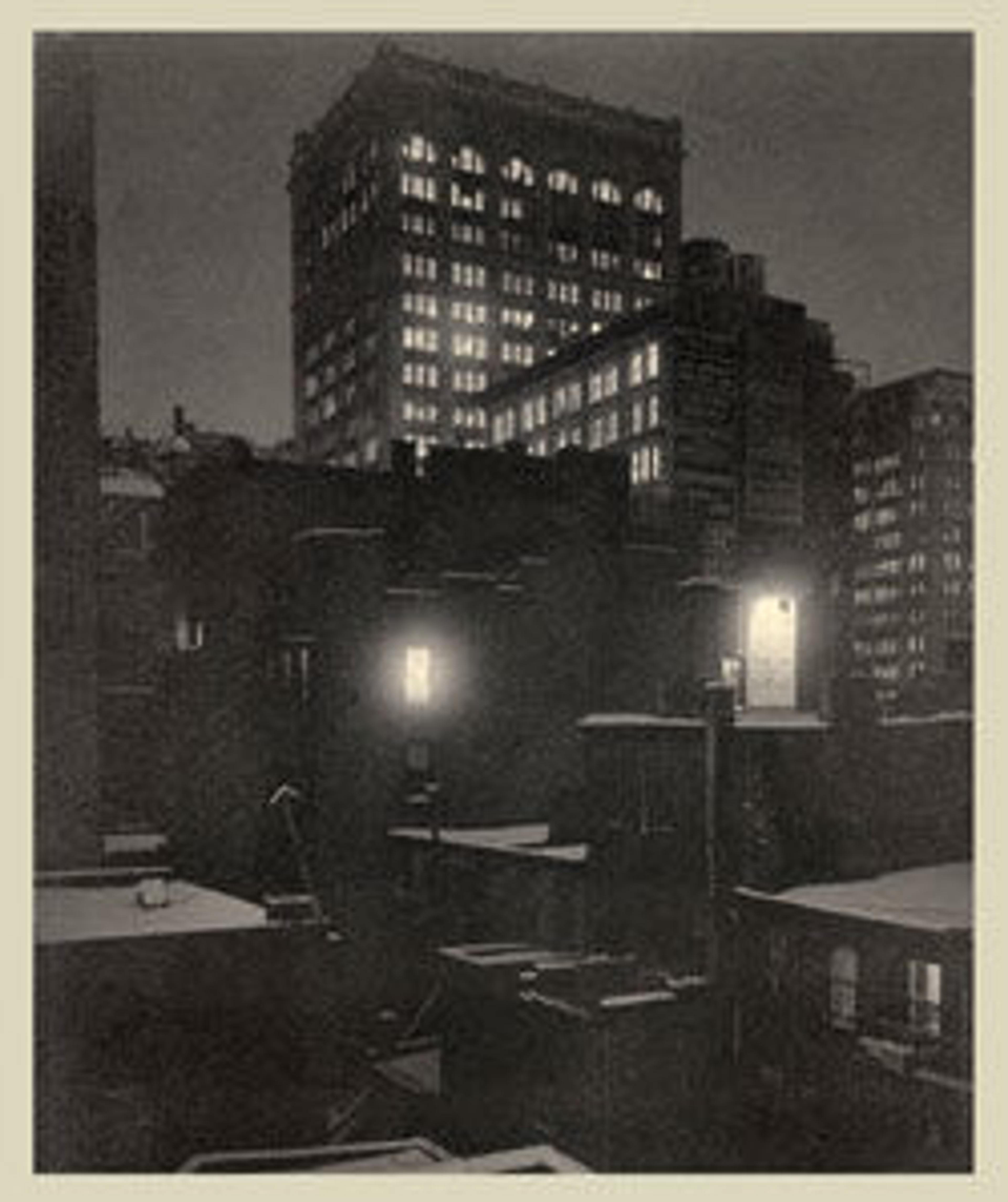[Geometric Backyards, New York]
Strand’s small yard on West Eighty-Third Street was nothing much: a fenced-in plot with a few trees. When he first photographed it in 1913, he had shown it in springtime, softening his focus on trees in full flower. Four years later, the yard’s simple configuration of dirt, fence, and flora was consistent as ever. But Strand’s eye had evolved. Awakened to Cubist paintings and Japanese prints, he apprehended the familiar space as a field of light, shadow, and sublime geometry. His earlier picture was cloying, with only an errant streak of empty clothesline anticipating the composition to come. Returning in 1917, he observes from above, finding instead a bright white sheet expectant with possibilities.
Artwork Details
- Title: [Geometric Backyards, New York]
- Artist: Paul Strand (American, New York 1890–1976 Orgeval, France)
- Date: 1917
- Medium: Platinum print
- Dimensions: Image: 24.6 × 32.6 cm (9 11/16 × 12 13/16 in.)
Sheet: 25.5 × 33.3 cm (10 1/16 × 13 1/8 in.) - Classification: Photographs
- Credit Line: Ford Motor Company Collection, Gift of Ford Motor Company and John C. Waddell, 1987
- Object Number: 1987.1100.12
- Rights and Reproduction: © Aperture Foundation, Inc., Paul Strand Archive
- Curatorial Department: Photographs
More Artwork
Research Resources
The Met provides unparalleled resources for research and welcomes an international community of students and scholars. The Met's Open Access API is where creators and researchers can connect to the The Met collection. Open Access data and public domain images are available for unrestricted commercial and noncommercial use without permission or fee.
To request images under copyright and other restrictions, please use this Image Request form.
Feedback
We continue to research and examine historical and cultural context for objects in The Met collection. If you have comments or questions about this object record, please contact us using the form below. The Museum looks forward to receiving your comments.
